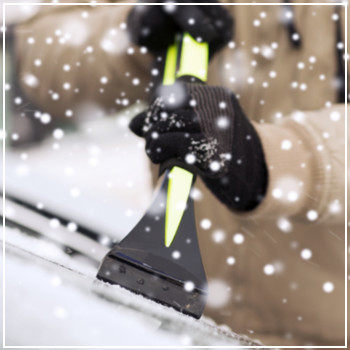 Driving in snow and ice is dangerous, but leaving your car parked all winter isn't much better. Cold weather can damage your vehicle by making parts brittle and fluids thicker, which puts extra stress on the system. Here’s what you need to know to keep your car in top shape this season.
Driving in snow and ice is dangerous, but leaving your car parked all winter isn't much better. Cold weather can damage your vehicle by making parts brittle and fluids thicker, which puts extra stress on the system. Here’s what you need to know to keep your car in top shape this season.
Tires
When temperatures drop below 44°F, the rubber in your all-season tires starts to harden. This reduces traction, especially on icy or snowy roads. Additionally, tire pressure decreases as it gets colder—losing about one PSI for every 10°F drop. If you don’t check your tire pressure regularly, under-inflated tires can wear unevenly, increase the risk of a blowout, or even cause loss of control on slippery surfaces.
Fluids
Cold weather thickens your car's fluids, including engine oil, transmission fluid, and antifreeze. To prevent damage, let your car warm up for 10–15 minutes before driving. This helps thin out the fluids so they can flow properly through the engine. Without warming up, the thickened fluids might harm internal components, leading to leaks or performance issues down the road.
At the start of winter, check all fluid levels. Top off anything low, and replace any that look dirty or cloudy. Consider using a thinner oil grade if you live in a very cold area, or add an engine block heater or battery blanket to make starting easier. Also, remember that coolant should never be just water—it needs to be proper antifreeze to prevent freezing and cracking internal parts.
Engine
It’s tempting to turn on the heater right after starting your car, but doing so can actually slow down the engine’s warm-up process. Wait at least 20 minutes before using the heater. This allows the engine to run more efficiently and use less fuel during the warm-up phase.
Windshields and Wipers
Extreme cold can crack windshields, especially if you pour hot water on them. That’s why it’s best to avoid that method. Instead, use an alcohol-based de-icer spray. High heat from the defroster can also damage the glass, so be cautious with the temperature setting.
Cold weather can freeze wiper blades to the windshield, causing damage if you try to move them. To prevent this, tilt the wipers away from the glass or remove them entirely during heavy snow. This protects both the wipers and the windshield from unnecessary stress.
Battery
Car batteries struggle in the cold. They work best between 30°F and 90°F, and extreme cold can significantly reduce their voltage. If your battery is over three years old, it may not hold a charge well in freezing temperatures. Before winter, have your battery tested. If it’s weak, consider replacing it. Storing your car in a garage or climate-controlled space can also help maintain battery life.
Leaking
Thickened fluids can lead to leaks, but another common issue is condensation. When a car moves between warm and cold environments, moisture builds up inside. This moisture can freeze, creating ice blocks in the power steering, brake, and transmission systems. These blockages can cause leaks or damage to internal components. Flush old fluids at the start of the season to remove any moisture buildup.
Corrosion
Even when parked, your car is exposed to road salt and debris, which can cause rust and corrosion. This affects metal parts like the undercarriage, wheel wells, and brakes. Left unchecked, rust can weaken the structure of your vehicle and reduce performance. Have your car rustproofed at the beginning of winter, and make it a habit to wash off salt and grime, especially from the undercarriage.
Whether you need fluids topped off, a battery replaced, or rustproofing, DaSilva’s Auto Body is here to help prepare your car for the winter. Contact our Naugatuck location today to schedule an appointment and ensure your vehicle is ready for whatever the season brings.
Aluminum Electric Wheelchair,Electric Wheelchair Pricing,An Electric Wheelchair,Aluminum Wheelchairs
Ningbo Baichen Medical Devices CO.,ltd , https://www.bcscooter.com
![<?echo $_SERVER['SERVER_NAME'];?>](/template/twentyseventeen/skin/images/header.jpg)